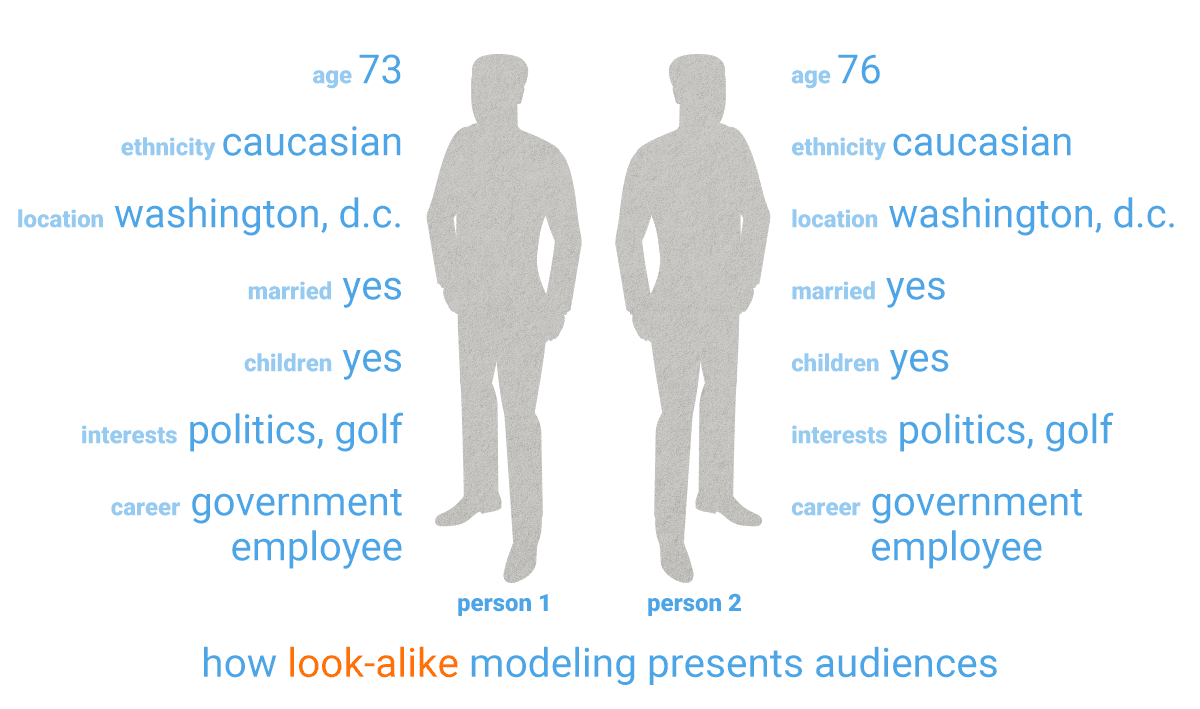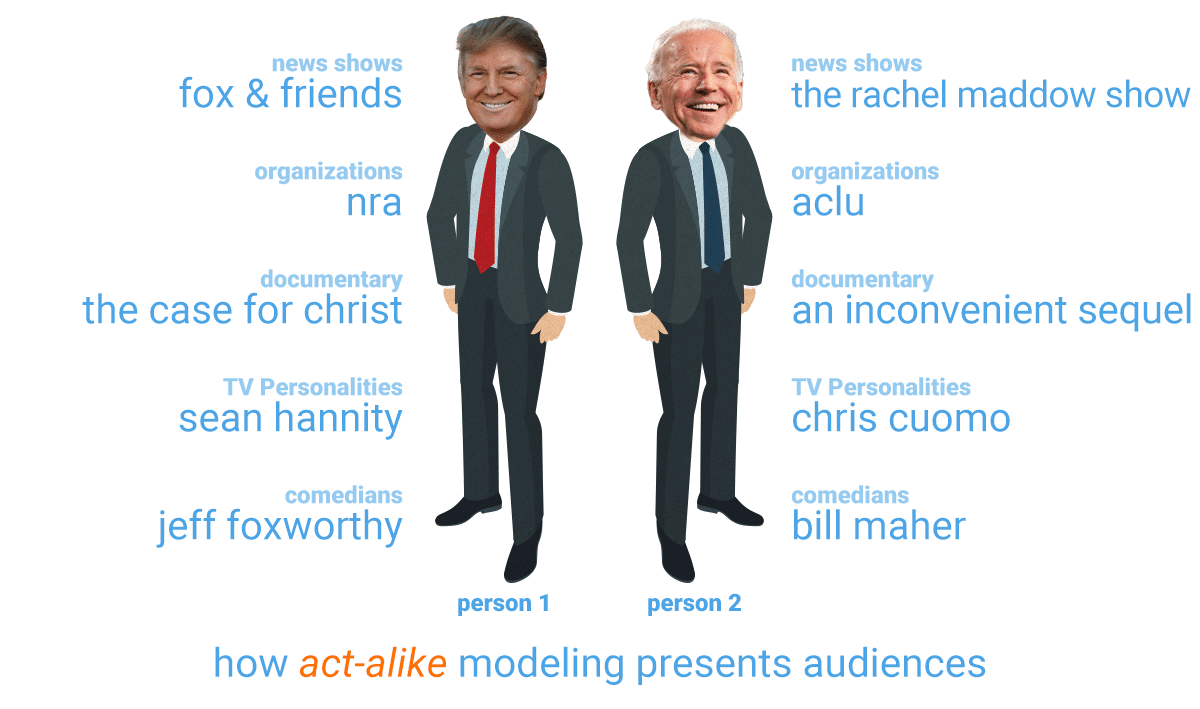Look-Alike vs Act-Alike Modeling: Stepping Out of the Shadows
How much does your data tell you about your audience? Let’s compare a couple of prominent figures with common look-alike modeling versus advanced act-alike modeling. Here, we used simple lookalike modeling to summarize two prominent politicians with large followings.

The data provides some basic information that would allow us to assume both men are of similar interests, as their lifestyle and demographics are so inline. Both men live and work in the same region, belong to the same generation, and are fathers with grandchildren. Their jobs as government employees suggest they’re in a higher tax bracket than many, and both enjoy the swift swing of a 9-iron.
This basic marketing data sheds enough light on customers for brands to begin segmenting and targeting campaigns around. But is this really enough? While it may seem like a reasonable amount of data to advertise to, the drastic differences between the two men becomes apparent when we simply lift the curtain.

By using our Audience Planner tool, we are able to see completely contrasting tastes as evident by the two men’s social media engagements. Television tastes take us from the conservative Fox & Friends to the liberal Rachel Maddow Show. Supported organizations range from the right-wing NRA to the progressive ACLU. Other interests, such as documentaries and comedians watched, again show the massive variance in affinities, with conservative and religious values facing off against liberal and progressive social critiques. Our act-alike model has shined down like a spotlight on the two men, presenting a much more involved set of data than before. Is look-alike modeling really enough information to spend ad budgets on? Would it be prudent to spend advertising budgets that group customers like this together?
We hardly think so, which is why our data uses act-alike modeling to determine more accurate audience segmentation and targeting. Act-alike modeling, or TrueAffinity, as we call it, analyzes billions of social media engagements to provide a much clearer image of your audience. If certain customers engage with certain brands, the data will draw links to discover parallels, and in turn aid in the creation of more robust user segmentation. Understanding your audience’s affinities helps build stronger relationships, and thus, stronger segments to build campaigns around. People aren’t just an age and location; they’ve got many opinions on many things, some particularly stronger than others. By marketing on a deeper level, brands are able to execute more precise strategies than with standard look-alike data.
When analyzing the actual brands that each of the men affiliates themselves with, we can see so much more than the silhouette. Our data modeling takes customers out of the shadows and into much more developed audience segments.
Let us help you take your audiences to the next level. Contact us at audiences@affinityanswers.com to learn more.


